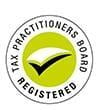All that you need to know about taxation on rental properties.
Rental properties 2020
How to get this publication
You can download a PDF at Rental properties (PDF 1.8MB)
Introduction
Rental properties 2020 will help you, as an owner of rental property in Australia, determine:
- which rental income is assessable for tax purposes
- which expenses are allowable deductions
- which records you need to keep
- what you need to know when you sell your rental property.
Many, but not all, of the expenses associated with rental properties will be deductible. This guide explains:
- how to apportion your expenses if only part of them are tax deductible
- what expenses are not deductible
- when you can claim those expenses that are deductible
- some you can claim in the tax return for the income year in which you spent the money
- others must be claimed over a number of years (including decline in value of depreciating assets and capital works expenses).
The examples given in this publication featuring Mr and Mrs Hitchman are based on the assumption that the Hitchmans own their rental properties as joint tenants who are not carrying on a business of letting rental properties.
When you own a rental property, you may also need to know about:
Rental income
Rental and other rental-related income is the full amount of rent and associated payments that you receive, or become entitled to, when you rent out your property, whether it is paid to you or your agent. You must include your share of the full amount of rent you earn in your tax return.
Your rental income also includes rent or associated payments that you receive, or become entitled to, when renting out part or all of your home through the sharing economy or the renting of your holiday home.
Rent and associated payments may be in the form of goods and services. You will need to work out the monetary value of these. For example, if the tenant gives you property or goods as rent instead of money, you include the market value of the property or goods as rental income in your tax return.
Rental-related income
You must include rental bond money as income if you become entitled to retain it, for instance, because a tenant defaulted on the rent, or because of damage to your rental property requiring repairs or maintenance.
If you received an insurance payout, there may be situations where the payout needs to be included as income, for example, if you received an insurance payment to compensate you for lost rent.
If you received a letting or booking fee, you must include this as part of your rental income.
Associated payments include all amounts you receive, or become entitled to, as part of the normal, repetitive and recurrent activities through which you intend to generate profit from the use of your rental property.
If you received a reimbursement or recoupment for deductible expenditure, you may have to include an amount as income. For example, if you received:
- an amount from a tenant to cover the cost of repairing damage to some part of your rental property and you can claim a deduction for the cost of the repairs, you need to include the whole amount in your income
- a government rebate for the purchase of a depreciating asset, such as a solar hot-water system, you may need to include an amount in your income. For more information, see Taxation Determination TD 2006/31– Income tax: is a government rebate received by a rental property owner an assessable recoupment under subsection 20-20(3) of the Income Tax Assessment Act 1997, where the owner is not carrying on a property rental business and receives the rebate for the purchase of a depreciating asset (for example, an energy saving appliance) for use in the rental property.
You must include as rental income any assessable amounts relating to limited recourse debt arrangements involving your rental property. For more information, see:
Co-ownership of rental property
The way that rental income and expenses are divided between co-owners varies depending on whether the co-owners are joint tenants, tenants in common or there is a partnership carrying on a business of letting rental properties.
Dividing income and expenses according to legal interest
Co-owners who are not carrying on a business of letting rental properties must divide the income and expenses for the rental property in line with their legal interest in the property. If they own the property as:
- joint tenants, they each hold an equal interest in the property
- tenants in common, they may hold unequal interests in the property, for example, one may hold a 20% interest and the other an 80% interest.
Rental income and expenses must be attributed to each co-owner according to their legal interest in the property, despite any agreement between co-owners, either oral or in writing, stating otherwise.
Example 1: Joint tenants
Mr and Mrs Hitchman own an investment rental property as joint tenants. In the relevant income year, Mrs Hitchman phones us and asks if she can claim 80% of the rental loss. Mrs Hitchman says she is earning $67,000 a year, and Mr Hitchman is earning $31,000. Therefore, it would be better if she claimed most of the rental loss, as she would save more tax. Mrs Hitchman thought it was fair that she claimed a bigger loss because most of the expenses were paid out of her wages. Under a partnership agreement drawn up by the Hitchmans, Mrs Hitchman is supposed to claim 80% of any rental loss.
We told Mrs Hitchman that where two people own a rental property as joint tenants, the net rental loss must be shared in line with their legal interest in the property. Therefore, the Hitchmans must each include half of the total income and expenses in their tax returns.
Any agreement that the Hitchmans might draw up to divide the income and expenses in proportions other than equal shares has no effect for income tax purposes. Therefore, even if Mrs Hitchman paid most of the bills associated with the rental property, she would not be able to claim more of the rental property deductions than Mr Hitchman.
End of exampleExample 2: Tenants in common
In example 1, if the Hitchmans owned their property as tenants in common in equal shares, Mrs Hitchman would still be able to claim only 50% of the total property deductions.
However, if Mrs Hitchman’s legal interest was 75% and Mr Hitchman’s legal interest was 25%, Mrs Hitchman would have to include 75% of the income and expenses in her tax return and Mr Hitchman would have to include 25% of the income and expenses in his tax return.
End of exampleInterest on money borrowed by only one of the co-owners which is exclusively used to acquire that person’s interest in the rental property does not need to be divided between all of the co-owners.
If you don’t know whether you hold your legal interest as a joint tenant or a tenant in common, read the title deed for the rental property. If you are unsure whether your activities constitute a rental property business, see Partners carrying on a business of letting rental properties.
Co-owners of an investment property (not in business)
A person who simply co-owns an investment property or several investment properties is usually regarded as an investor who is not carrying on a business of letting rental properties, either alone or with the other co-owners. This is because of the limited scope of the rental property activities and the limited degree to which a co-owner actively participates in rental property activities.
Example 3: Co-owners who are not carrying on a business of letting rental properties
The Tobins own, as joint tenants, two units and a house from which they derive rental income. The Tobins occasionally inspect the properties and also interview prospective tenants. Mr Tobin performs most repairs and maintenance on the properties himself, although he generally relies on the tenants to let him know what is required. The Tobins do any cleaning or maintenance that is required when tenants move out. Arrangements have been made with the tenants for the weekly rent to be paid into an account at their local bank. Although the Tobins devote some of their time to rental income activities, their main sources of income are their respective full-time jobs.
The Tobins are not partners carrying on a business of letting rental properties. They are only co-owners of several rental properties. Therefore, as joint tenants, they must each include half of the total income and expenses in their tax returns, that is, in line with their legal interest in the properties.
End of examplePartners carrying on a business of letting rental properties
Most rental activities are a form of investment and do not amount to carrying on a business. However, where you are carrying on a business of letting rental properties in partnership with others, you must divide the net rental income or loss according to the partnership agreement. You must do this whether or not the legal interests in the rental properties are different to the partners’ entitlements to profits and losses under the partnership agreement. If you do not have a partnership agreement, you should divide your net rental income or loss between the partners equally, see Example 4.
Example 4: Co-owners who are carrying on a business of letting rental properties
The D’Souzas, own a number of rental properties, either as joint tenants or tenants in common. They own eight houses and three apartment blocks (each apartment block comprising six residential units) making a total of 26 properties.
The D’Souzas actively manage all of the properties. They devote a significant amount of time, an average of 25 hours per week each, to these activities. They undertake all financial planning and decision making in relation to the properties. They interview all prospective tenants and collect all the rents. They carry out regular property inspections and attend to all of the everyday maintenance and repairs themselves or organise for them to be done on their behalf. Apart from income Mr D’Souza earns from shares, they have no other sources of income.
The D’Souzas are carrying on a business of letting rental properties. This is demonstrated by:
- the significant size and scale of the rental property activities
- the number of hours the D’Souzas spend on the activities
- the D’Souzas’ extensive personal involvement in the activities, and
- the business-like manner in which the activities are planned, organised and carried on.
Mr and Mrs D’Souza have a written partnership agreement in which they agreed to carry on a business of letting rental properties. They have agreed that Mrs D’Souza is entitled to a 75% share of the partnership profits or losses and Mr D’Souza is entitled to a 25% share of the partnership profits or losses.
Because the D’Souzas are carrying on a business of letting rental properties, the net profit or loss it generates is divided between them according to their partnership agreement (in proportions of 75% and 25%), even if their legal interests in the rental properties are equal, that is, they each own 50%.
End of exampleFor more information about dividing net rental income or losses between co-owners, see Taxation Ruling TR 93/32– Income tax: rental property – division of net income or loss between co-owners.
For more information about determining whether a business of letting rental properties is being carried on, determining whether it is being carried on in partnership, and the distribution of partnership profits and losses, see:
- Taxation Ruling TR 97/11– Income tax: am I carrying on a business of primary production?
Paragraph 13 of Taxation Ruling TR 97/11 lists eight indicators to determine whether a business is being carried on. Although this ruling refers to the business of primary production, these indicators apply equally to activities of a non-primary production nature.
- Taxation Ruling TR 94/8– Income tax: whether a business is carried on in partnership (including ‘husband and wife’ partnerships)
- Taxation Ruling IT 2423– Withholding tax: whether rental income constitutes proceeds of business – permanent establishment – deduction for interest
- Taxation Ruling IT 2316– Income tax: distribution of partnership profits and losses.
If you are carrying on a business, you may be eligible for the small business concessions. For more information, see Small business entity concessions.
CGT small business concessions do not apply to assets that are used mainly to derive rent.
Contact us or your recognised tax adviser if you are unsure whether:
- your rental property activities amount to a partnership carrying on a business of letting rental properties
- you are carrying on a rental property activity as a joint tenant or a tenant in common, or
- you are in both categories.
Rental expenses
You can claim a deduction for certain expenses you incur for the period your property is rented or is genuinely available for rent. However, you cannot claim expenses of a capital nature or private nature (although you may be able to claim decline in value deductions or capital works deductions for certain capital expenditure or include certain capital costs in the cost base of the property for CGT purposes).
Types of rental expenses
There are three categories of rental expenses, those for which you:
- cannot claim deductions
- can claim an immediate deduction in the income year you incur the expense
- can claim deductions over a number of income years
Always check your supplier's ABN
From 1 July 2019, when you make a payment to a contractor (such as a tradesperson) for services connected with your rental property, check that they have an Australian business number (ABN). If they don't provide you with an ABN, you may have to withhold 47% from that payment and pay it to us. See Withholding from suppliers for details of when you are required to withhold.
For payments you made from 1 July 2019, if you didn’t withhold when you were required to, you may not claim the respective expenses as tax deductions.
For more information, see Removing tax deductibility of non-compliant payments.
Example 5 – Withholding from suppliers
Sergio and Marcia own a rental property and need to have a wall repaired.
Sergio obtains a quote from Derek’s Wall Repairs, a sole trader. Derek offers to do the job for $2500 with a tax invoice, or $1800 for cash. Sergio and Marcia opt to pay cash and not receive a tax invoice. They do not ask for Derek's ABN and Sergio does not withhold any amount from the $1800. He should have withheld 47% of that $1800 payment, that is, $846, and paid Derek $954.
Therefore the payment of $1800 is non-compliant and, as a result, Sergio and Marcia are not entitled to claim a deduction for the repair.
End of exampleExpenses for which you cannot claim deductions
Expenses for which you are not able to claim deductions include:
- acquisition and disposal costs of the property
- expenses not actually incurred by you, such as water or electricity usage charges borne by your tenants
- expenses associated with periods where your property (including your holiday home) was not genuinely available for rent.
- expenses that are not related to the rental of a property, such as
- expenses connected to your own use of a holiday home that you rent out for part of the year, or
- costs of maintaining a non-income producing property used as collateral for the investment loan
- expenses related to holding vacant land.
Other expenses for which you are not able to claim deductions include:
- travel expenses to inspect a property before you buy it
- expenses incurred in relocating assets between rental properties prior to renting
- expenses for rental seminars about helping you find a rental property to invest in.
You are not entitled to a deduction for travel expenses relating to your residential rental property incurred from 1 July 2017, unless you are:
- using the property in carrying on a business (including a business of letting rental properties), or
- an excluded entity. For the meaning of 'excluded entity', see Definitions.
Travel expenses include the costs of travel to inspect, maintain or collect rent for the property, and costs of meals and accommodation related to such travel.
If your travel expenses relating to your residential rental property also relate to another income producing activity, you will need to apportion the expenses on a fair and reasonable basis. For more information, see Apportionment of travel expenses.
From 1 July 2017, you may not claim a deduction for a decline in value of certain second-hand depreciating assets against your residential rental property income unless you are using the property in carrying on a business (including a business of letting rental properties), or you are an excluded entity. For more information, see Limit on deductions for decline in value of second-hand depreciating assets.
For more information, see:
Acquisition and disposal costs
You cannot claim a deduction for the costs of acquiring or disposing of your rental property, such as:
- purchase cost of the property
- fees on bank guarantees in lieu of deposits
- conveyancing costs
- advertising expenses
- fees of a buyer’s agent you engage to find you a suitable rental property to purchase, including where the agent recommends a property manager free of charge as an optional or supplementary service
- stamp duty on the transfer of the property (but not stamp duty on a lease of property; see Lease document expenses).
However, these costs may form part of the cost base of the property for CGT purposes. See also Capital gains tax
Example 6: Acquisition costs
The Hitchmans purchased a rental property for $170,000 in July 2019. They also paid surveyor’s fees of $350 and stamp duty of $750 on the transfer of the property. Neither of these expenses are deductible against the Hitchmans’ rental income. However, in addition to the $170,000 purchase price, the incidental costs of $350 and $750 (totalling $1,100) are included in the cost base and reduced cost base of the property.
This means that when the Hitchmans dispose of the property, the cost base or reduced cost base for the purposes of determining the amount of any capital gain or capital loss will be $171,100 ($170,000 + $1,100).
End of exampleFor more information, see Guide to capital gains tax 2020.
Deductions for vacant land
Deductions that you can claim for holding vacant land, for expenses you incurred on or after 1 July 2019, are now limited. This applies to land you held before or from 1 July 2019.
Your land is considered vacant if, at the time you incurred the expense:
- the land did not contain a substantial and permanent structure, or
- the land contained a substantial and permanent structure that is residential premises, but the premises
- could not lawfully be occupied, or
- was not rented out or made available for rent.
You can still deduct vacant land holding costs if:
- the land is held by an 'excluded entity', that is a
- corporate tax entity
- superannuation plan (other than a self-managed superannuation fund)
- managed investment trust
- public unit trust
- unit trust or partnership of which all the members are corporate tax entities, superannuation plans, managed investment trust or public unit trust
- the land is used to carry on a business by
- you
- your affiliate or an entity of which you are an affiliate
- your spouse or child under 18 years old
- an entity connected with you
- you, an affiliate (as listed above), spouse or child, or an entity connected with you, are carrying on a business of primary production and the land is leased or hired to another entity
- you make the land available at arm's length to a business for use in that business
- a substantial and permanent structure was on the land but an exceptional circumstance occurred that resulted in the land becoming vacant.
Expenses for which you can claim an immediate deduction
Expenses for which you may be entitled to an immediate deduction in the income year you incur the expense include:
- advertising for tenants
- bank charges
- body corporate fees and charges
- cleaning
- council rates
- electricity and gas
- annual power guarantee fees
- gardening and lawn mowing
- in-house audio and video service charges
- insurance
- building
- contents
- public liability
- interest on loans
- land tax
- lease document expenses
- preparation
- registration
- stamp duty
- legal expenses (excluding acquisition costs and borrowing costs)
- mortgage discharge expenses
- pest control
- property agent's fees and commissions (including prior to the property being available to rent)
- quantity surveyor’s fees
- costs incurred in relocating tenants into temporary accommodation if the property is unfit to occupy for a period of time
- repairs and maintenance
cost of a defective building works report in connection to repairs and maintenance conducted
- secretarial and bookkeeping fees
- security patrol fees
- servicing costs, for example, servicing a water heater
- stationery and postage
- telephone calls and rental
- tax-related expenses
- travel and car expenses to the extent that they are deductible
- water charges.
You can claim a deduction for these expenses only if you actually incur them and they are not paid by the tenant.
Expenses prior to property being genuinely available for rent
You can claim expenditure such as interest on loans, local council water and sewerage rates, land taxes and emergency services levies you incurred during renovations to a property you intend to rent out. However, you cannot claim deductions from the time your intention changes, for example, if you decide to use the property for private purposes.
Apportionment of rental expenses
There may be situations where not all your expenses are deductible and you need to work out the deductible portion. To do this you subtract any non-deductible expenses from the total amount you have for each category of expense; what remains is your deductible expense.
You will need to apportion your expenses if any of the following apply to you:
- your property is genuinely available for rent for only part of the year
- your property is used for private purposes for part of the year
- only part of your property is used to earn rent
- you rent your property at non-commercial rates
- your investment loan is partially used for private purposes.
Is the property genuinely available for rent?
Rental expenses are deductible to the extent that they are incurred for the purpose of producing rental income.
Expenses may be deductible for periods when the property is not rented out, providing the property is genuinely available for rent – that is:
- the property is advertised in ways which give it broad exposure to potential tenants, and
- having regard to all the circumstances, tenants are reasonably likely to rent it.
The absence of these factors generally indicates the owner does not have a genuine intention to make income from the property and may have other purposes – such as using it or reserving it for private use.
Factors that may indicate a property is not genuinely available for rent include:
- it is advertised in ways that limit its exposure to potential tenants – for example, the property is only advertised
- at your workplace
- by word of mouth
- outside annual holiday periods when the likelihood of it being rented out is very low
- the location, condition of the property, or accessibility to the property, mean that it is unlikely tenants will seek to rent it
- you place unreasonable or stringent conditions on renting out the property that restrict the likelihood of the property being rented out such as
- setting the rent above the rate of comparable properties in the area
- placing a combination of restrictions on renting out the property – such as requiring prospective tenants to provide references for short holiday stays as well as having conditions like 'no children' and 'no pets'
- you refuse to rent out the property to interested people without adequate reasons.
Example 7 – Unreasonable rental conditions placed on property
Josh and Maria are retired and own a holiday home where they stay periodically. They advertise the property for short-term holiday rental through a real estate agent.
Josh and Maria have instructed the agent that they must personally approve tenants before they are permitted to stay and prospective tenants must provide references and have no children or pets.
At no time during the year do Josh and Maria agree to rent out the property even though they receive a number of inquiries.
The conditions placed on the renting of the property and Josh and Maria's refusal to rent it to prospective tenants indicate their intention is not to make income from the property, but to reserve it for their own use. Josh and Maria cannot claim any deductions for the property.
Josh and Maria need to keep records of their expenses. If they make a capital gain when they sell the property, their property expenses (such as property insurance, interest on the funds borrowed to purchase the property, repair costs, maintenance costs and council rates) are taken into account in working out any capital gain.
End of exampleExample 8 – Private use by owners during key periods with little or no demand for property at other times
Daniel and Kate have two school aged children and own a holiday house near the beach. The house is located in an area that is popular with summer holiday makers but is only accessible by four-wheel drive vehicle.
During the year Daniel and Kate advertise the property for rent through a local real estate agent. However, Daniel and Kate advise the agent that during each school holiday period the property is not to be rented out. They want to reserve the property for their own use.
While there would be demand for the property during the summer holiday period, there is no demand outside this period because of the small number of holiday makers and the location and limited access to the property.
The house is not rented out at all during the income year.
In Daniel and Kate’s circumstances, they cannot claim any deductions for the property. They did not have a genuine intention to make income from the property. It was essentially for private use.
If in the circumstances Daniel and Kate happened to rent out the property for a period, they can claim a deduction for a proportion of their expenses based on the period the property was actually rented out. For example, if the house was rented out for two weeks, they could claim a deduction for 2/52 of their expenses.
Daniel and Kate need to keep records of their expenses. If they make a capital gain when they sell the property, the proportion of expenses (such as interest, insurance, maintenance costs and council rates) they could not claim a deduction for are taken into account in working out their capital gain.
End of exampleProperty available for part-year rental
If you use your property for both private purposes and to produce rental income, you cannot claim a deduction for the portion of any expenditure that relates to your private use. Examples of properties you may use for both private and rental purposes are holiday homes and time-share units. In cases such as these you cannot claim a deduction for any expenditure incurred for those periods when the home or unit was not genuinely available for rent – including when it was used by you, your relatives or your friends for private purposes.
In some circumstances it may be easy to decide which expenditure is private in nature. For example, council rates paid for a full year would need to be apportioned based on the total time the property was rented out and genuinely available for rent during the year as a proportion of the total year.
It may not be appropriate to apportion all your expenses on the same basis. For example, expenses that relate solely to the renting of your property are fully deductible and you would not apportion them based on the time the property was rented out. Such costs include:
- real estate agents commissions
- costs of advertising for tenants
- phone calls you make to a tradesperson to fix damage caused by a tenant
- the cost of removing rubbish left by tenants.
On the other hand, no part of certain expenses that relate solely to periods when the property is not rented out are deductible. This would include the cost of phone calls you make to a tradesperson to fix damage caused when you were using the property for private purposes.
Example 9: Apportionment of expenses where property is rented for part of the year
Dave owns a property in Tasmania. He rents out his property from 1 November 2019 to 30 March 2020, a total of 151 days. He lives alone in the house for the rest of the year. The council rates are $1,000 per year. He apportions the council rates on the basis of time rented.
Rental expense × portion of year = deductible amount
He can claim a deduction against his rental income of
$1,000 × (151 ÷ 366) = $413
If Dave has to make phone calls to tradespersons to fix damage caused by a tenant or has any other expenses which relate solely to the renting of his property, he would work out his deduction for these by reasonably estimating the cost of each of these expenses: it would not be appropriate for him to work out his deduction by claiming 151/366 of the total expense.
End of exampleExample 10 – Private use of property by owner
Gail and Craig jointly own a property which was brand new when they purchased it. They rent the property out at market rates and use it as a holiday home. They advertise the property for rent during the year through a real estate agent.
Gail and Craig use the property themselves for four weeks as a holiday home during the year.
During the year, Gail and Craig’s expenses for the property are $36,629. This includes $1,828 for the agent’s commission and the costs of advertising for tenants. It also includes interest on the funds borrowed to purchase the holiday home, property insurance, maintenance costs, council rates, the decline in value of depreciating assets and capital works deductions.
Gail and Craig receive $25,650 from renting out the property during the year.
No deductions can be claimed for the four weeks Gail and Craig used the property themselves.
Gail and Craig can claim the full $1,828 as a deduction for the agent’s commission and costs of advertising for tenants. Gail and Craig can claim deductions for their other expenses ($34,801) based on the proportion of the income year the property was rented out or was genuinely available for rent.
Income tax return
Gail and Craig’s rental income and deductions for the year are as follows:
Rent received | $25,650 |
Rental deductions | $33,952 |
Rental loss | ($8,302) |
As they are joint owners, Gail and Craig claim a rental loss of $4,151 each in their tax returns.
Gail and Craig need to keep records of their expenses. If they make a capital gain when they sell the property, the proportion of the expenses they could not claim a deduction for are taken into account in working out any capital gain.
End of exampleExample 11 – Holiday home rented out for part of the year
Akshay and Jesminda jointly own a holiday home. They rent it out between 20 December and 17 January because they can make a significant amount of money which helps offset the costs of owning the property for the year. They reserve the property for their own use for the rest of the year.
Akshay and Jesminda's expenses for the holiday home for the year were $32,300. This includes $1,100 for the agent’s commission and the costs of advertising for tenants. It also includes interest on the funds borrowed to purchase the property, property insurance, repair costs, maintenance costs and council rates.
Akshay and Jesminda received $3,000 per week from renting the property out during the four weeks over the Christmas – New Year period.
Overall the property expenses were more than the rent they received. Akshay and Jesminda can claim the full $1,100 as a deduction for the agent’s commission and the costs of advertising for tenants. However, for their other expenses, Akshay and Jesminda can only claim deductions for the proportion of the year they rented out the property (four weeks). They declared net rental income in their tax returns as follows:
Rent received | $12,000 |
Rental deductions | $3,500 |
Net rental income | $8,500 |
As they are joint owners, Akshay and Jesminda declare net rental income of $4,250 each in their tax returns.
Akshay and Jesminda need to keep records of their expenses. If they make a capital gain when they sell the property, the proportion of the expenses they could not claim a deduction for are taken into account in working out their capital gain.
End of exampleOnly part of your property is used to earn rent
If only part of your property is used to earn rent, you can claim only that part of the expenses that relates to the rental income. As a general guide, apportion according to the floor-area that is that part of the residence solely occupied by the tenant, together with a reasonable figure for tenant access to the general living areas, including garage and outdoor areas if applicable.
Example 12: Renting out part of a residential property
Michael’s private residence includes a self-contained flat. The floor area of the flat is one-third of the area of the residence.
Michael rented out the flat for six months in the year at $100 per week. During the rest of the year his niece, Fiona, lived in the flat rent free.
The annual mortgage interest, building insurance, rates and taxes for the whole property amounted to $9,000. Michael apportions these expenses on the basis of the floor-area, so one-third (that is $3,000) applies to the flat. However, as Michael used the flat to produce rental income for only half of the year, he can claim a deduction for only $1,500 (half of $3,000).
Assuming there were no other expenses, Michael would calculate the income and expenses from his property as:
Rent | $2,600 |
Expenses | $1,500 |
Net rental income | $1,100 |
End of example
Example 13: Renting out part of a residential property
John decided to rent out one room in his residence. The floor area of the room is 20% of the area of the residence. John also shared equal access to the general areas such as the kitchen, bathroom and laundry. The floor area of these rooms is 60% of the area of the residence.
John rented out the room and access to the general areas for 12 months in the year at $250 per week.
The annual mortgage interest, building insurance, rates and taxes for the whole property amounted to $12,000. Using the floor-area basis for apportioning these expenses, 20% (that is $2,400) applies to the room.
Assuming there were no other expenses, John would calculate the income and expenses from his property as:
Rent | $13,000 |
Room Expenses | $2,400 |
General areas expenses | $3,600 |
Net rental income | $7,000 |
End of example
For more information about the apportionment of expenses, see:
- Taxation Ruling IT 2167Income tax: rental properties – non-economic rental, holiday home, share of residence, etc. cases, family trust cases and
- Taxation Ruling TR 97/23Income tax: deductions for repairs.
Non-commercial rental
If you let a property, or part of a property, at less than normal commercial rates, there may be a limit on the deductions you can claim.
Example 14 – Private use by owner and rented to relatives or friends at a discounted rate
Kelly and Dean have a holiday home they own jointly from 1 July 2019. The home was three years old when they purchased it. During holiday periods, the market rent is $840 per week. They advertise the property for rent during the year through a real estate agent.
Kelly and Dean arrange with the agent for their friend Kimarny to stay at the property for three weeks at a nominal rent of $200 per week. They also use the property themselves for four weeks during the year.
During the year, Kelly and Dean's expenses for the property are $20,800 ($400 per week). This includes interest on the funds borrowed to purchase the holiday home, property insurance, the agent's commission, maintenance costs, council rates and capital works deductions.
Kelly and Dean receive $10,000 from renting out the property during the year. This includes the $600 they received from Kimarny.
No deductions can be claimed for the four weeks Kelly and Dean used the property themselves.
Kelly and Dean can claim deductions for their expenses based on the proportion of the income year it was rented out or was genuinely available for rent at the market rate: 45 ÷ 52 weeks × $20,800 = $18,000.
If Kimarny had rented the property for the market rate, Kelly and Dean would have been able to claim deductions for the three week period of $1,200 (3 ÷ 52 × $20,800 = $1,200).
However because the rent Kelly and Dean received from Kimarny was less than market rate and their expenses were more than the rent received during that period, they cannot claim all of the expenses. Kelly and Dean can only claim deductions equal to the amount of the rent during this period, that is, $600.
Income tax return
Kelly and Dean's rental income and deductions for the year are as follows:
Rent received | $10,000 |
Rental deductions | $18,600 |
Rental loss | ($8,600) |
As they are joint owners, Kelly and Dean claim a rental loss of $4,300 each in their tax returns.
Kelly and Dean need to keep records of their expenses. If they make a capital gain when they sell the property, the proportion of the expenses they could not claim a deduction for are taken into account in working out their capital gain.
End of exampleFor more information about non-commercial rental arrangements, see Taxation Ruling IT 2167.
Investment loan used for private purposes
If you take out a loan to purchase a rental property, you can claim the interest charged on that loan as a deduction. However, to the extent that the loan is used or refinanced for a private purpose, you must apportion the interest expense to account for the private use.
Example 15: Investment loan used for partial private purpose
Rufus has owned his apartment for a number of years and is now looking to turn it into a rental when he upgrades to a larger residence.
Rufus still has a mortgage over the apartment and decides to refinance the mortgage into an investment loan. When the loan is refinanced, Rufus uses part of the new loan towards the purchase of his new residence which will be used for a private purpose.
Rufus must apportion his interest expenses and can only claim a deduction for interest expense to the extent that it relates to the producing of his rental income. He cannot claim a deduction for any portion of the expenses which relates to private purposes.
End of exampleCo-owner rents property
If you own a property:
- as tenant in common with another person,
- you do not live in the property, and
- you let your part of a property to your co-owner at a commercial rental rate
then the rent received is assessable income. Accordingly, you may deduct any losses or outgoings incurred in gaining the rental income, provided the losses or outgoings are not of a capital, domestic or private nature.
Asbestos remediation
Work undertaken to an investment property in dealing with asbestos may, in some cases, be a deductible repair as described above. This depends on the nature or extent of the remediation process.
Where the expenditure is not otherwise deductible as a repair, a deduction may be available as an ‘environmental protection activity’.
For more information, see Asbestos-affected properties.
Body corporate fees and charges
Strata title body corporates are constituted under the strata title legislation of the various states and territories.
You may be able to claim a deduction for body corporate fees and charges you incur for your rental property.
Body corporate fees and charges may be incurred to cover the cost of day-to-day administration and maintenance or they may be applied to a special purpose fund.
Payments you make to body corporate administration funds and general purpose sinking funds are considered to be payments for the provision of services by the body corporate and you can claim a deduction for these levies at the time you incur them. However, if the body corporate requires you to make payments to a special purpose fund to pay for particular capital expenditure, these levies are not deductible.
Similarly, if the body corporate levies a special contribution for major capital expenses to be paid out of the general purpose sinking fund, you will not be entitled to a deduction for this special contribution amount. This is because payments to cover the cost of capital improvements or repairs of a capital nature are not deductible; see Repairs and maintenance and Taxation Ruling TR 97/23. You may be able to claim a capital works deduction for the cost of capital improvements or repairs of a capital nature once the work is completed and the cost has been charged to either the special purpose fund or, if a special contribution has been levied, the general purpose sinking fund; see Capital works deductions.
A general purpose sinking fund is one established to cover a variety of unspecified expenses (some of which may be capital expenses) that are likely to be incurred by the body corporate in maintaining the common property (for example, painting of the common property, repairing or replacing fixtures and fittings of the common property). A special purpose fund is one that is established to cover a specified, generally significant, expense which is not covered by ongoing contributions to a general purpose sinking fund. Most special purpose funds are established to cover costs of capital improvement to the common property.
If the body corporate fees and charges you incur are for things like the maintenance of gardens, deductible repairs and building insurance, you cannot also claim deductions for these as part of other expenses. For example, you cannot claim a separate deduction for garden maintenance if that expense is already included in body corporate fees and charges.
Common property
Common property is that part of a strata plan not comprised in any proprietor's lot, and includes stairways, lifts, passages, common garden areas, common laundries and other facilities intended for common use.
The ownership of the common property varies according to the relevant state strata title legislation. However, in all states, the income derived from the use of the common property is income of lot owners. Accordingly, you can claim deductions for capital works and, in some cases, the decline in value of depreciating assets that form part of the common property in proportion to your lot entitlement. For more information, see Deduction for decline in value of depreciating assets.
For more information about strata title body corporates, see Taxation Ruling TR 2015/3.
Interest on loans
If you take out a loan to purchase a rental property, you can claim the interest charged on that loan, or a portion of the interest, as a deduction. However, the property must be rented, or genuinely available for rental, in the income year for which you claim a deduction.
You cannot claim a deduction for interest expenses you incur if:
- you start to use the property for private purposes, or
- you refinance an investment loan for private purposes or otherwise use the loan for a private purpose.
If the expenses were incurred partly for a private purpose, you must apportion the expense accordingly. For more information see Investment loan used for private purpose.
While the property is rented, or genuinely available for rent, you may also claim interest charged on loans taken out:
- to purchase depreciating assets
- for repairs
- for renovations.
Similarly, if you take out a loan to finance renovations to a property you intend to rent out, the interest on the loan will be deductible from the time you took the loan out. However, if your intention changes, for example, you decide to use the property for private purposes and you no longer use it to produce rent or other income, you cannot claim the interest after your intention changes.
Banks and other lending institutions offer a range of financial products which can be used to acquire a rental property. Many of these products permit flexible repayment and redraw facilities. As a consequence, a loan might be obtained to purchase both a rental property and, for example, a private car. In cases of this type, the interest on the loan must be apportioned into deductible and non-deductible parts according to the amounts borrowed for the rental property and for private purposes. A simple example of the necessary calculation for apportionment of interest is in example 16. If you have a loan account that has a fluctuating balance due to a variety of deposits and withdrawals, and it is used for both private purposes and rental property purposes, you must keep accurate records to enable you to calculate the interest that applies to the rental property portion of the loan; that is, you must separate the interest that relates to the rental property from any interest that relates to the private use of the funds.
Some rental property owners borrow money to buy a new home and then rent out their previous home. If there is an outstanding loan on the old home and the property is used to produce income, the interest outstanding on the loan, or part of the interest, will be deductible. However, an interest deduction cannot be claimed on the loan used to buy the new home because it is not used to produce income. This is the case whether or not the loan for the new home is secured against the former home.
Example 16: Apportionment of interest
The Hitchmans decide to use their bank’s ‘Mortgage breaker’ account to take out a loan of $209,000 from which $170,000 is to be used to buy a rental property and $39,000 is to be used to purchase a private car. They will need to work out each year how much of their interest payments is tax deductible. The following whole-year example illustrates an appropriate method that could be used to calculate the proportion of interest that is deductible. The example assumes an interest rate of 6.75% per annum on the loan and that the property is rented from 1 July:
Interest for year 1 = $209,000 × 6.75% = $14,108
Apportionment of interest payment related to rental property:


More complicated investment loan interest payment arrangements also exist, such as 'linked' or 'split' loans which involve two or more loans or sub-accounts in which one is used for private purposes and the other for business purposes. Repayments are allocated to the private account and the unpaid interest on the business account is capitalised. This is designed to allow you to pay off your home loan faster while deferring payments on your rental property loan and maximises your potential interest deduction by creating interest on interest.
This can create a tax benefit because the deduction for interest actually incurred on the investment account is greater than the amount of interest that might reasonably be expected to have been allowable but for using the loan arrangement outlined above. In this case we may disallow some or all of your interest deductions. You should seek advice from your recognised tax adviser or contact us to discuss your situation. For more information, see Taxation Determination TD 2012/1.
If you prepay interest it may not be deductible all at once; see Prepaid expenses.
Thin capitalisation
If you are an Australian resident and you or any associate entities have certain international dealings, overseas interests or if you are a foreign resident, thin capitalisation rules may affect you if your debt deductions, such as interest, combined with those of your associate entities for 2019–20 are more than $2,000,000.
Companies, partnerships and trusts that have international dealings will need to complete the International Dealings Schedule (IDS). See the International dealings schedule 2020 (NAT 73345).
For more information about the deductibility of interest, see:
- Taxation Ruling TR 2004/4– Income tax: deductions for interest incurred prior to the commencement of, or following the cessation of, relevant income earning activities
- Taxation Ruling TR 2000/2– Income tax: deductibility of interest on moneys drawn down under line of credit facilities and redraw facilities
- Taxation Ruling TR 98/22– Income tax: the taxation consequences for taxpayers entering into certain linked or split loan facilities
- Taxation Ruling TR 95/25 – Income tax: deductions for interest under section 8-1 of the Income Tax Assessment Act 1997 following FC of T v. Roberts, FC of T v. Smith
- Taxation Ruling TR 2019/2 - Income tax: whether penalty interest is deductible
- Taxation Determination TD 1999/42– Income tax: do the principles set out in Taxation Ruling TR 98/22 apply to line of credit facilities?
- Taxation Determination TD 2012/1– Income tax: can Part IVA of the Income Tax Assessment Act 1936 apply to deny a deduction for some, or all, of the interest expense incurred in respect of an 'investment loan interest payment arrangement' of the type described in this Determination?
- Rental expenses to claim.
If you need help to calculate your interest deduction, seek advice from your recognised tax adviser or contact us to discuss your situation.
Land tax
Land tax liabilities may be deductible, depending on when the land tax liability arises. The timing of when you incur a liability to pay land tax will depend on the relevant state legislation. Your liability to pay land tax does not rely on the lodgment of a land tax return or on the taxing authority issuing a land tax assessment. In many states, the year in which the property is used for the relevant purposes determines when you are liable, even if an assessment does not issue until a later date.
When you receive land tax assessments in arrears, the amount of land tax is not deductible in the income year in which you pay the arrears. The land tax amounts are deductible in the respective income years to which the liability for the land tax relates.
If a land owner receives a land tax assessment for a year, then later in the same financial year either sells the property or starts to use it as their residence, there is no requirement to apportion the land tax deduction. We consider that the land tax liability was incurred for an income producing purpose because the liability for it was founded in the property's use for income-producing purposes.
In the event of the property being sold and there being an adjustment of the land tax, the recovered amount should be declared as rental income by the vendor.
Lease document expenses
Your share of the costs of preparing and registering a lease and the cost of stamp duty on a lease are deductible to the extent that you have used, or will use, the property to produce income. This includes any such costs associated with an assignment or surrender of a lease.
For example, freehold title cannot be obtained for properties in the Australian Capital Territory (ACT). They are commonly acquired under a 99-year crown lease. Therefore, stamp duty, preparation and registration costs you incur on the lease of an ACT property are deductible to the extent that you use the property as a rental property.
Legal expenses
Some legal expenses incurred in producing your rental income are deductible. These include the costs of:
- evicting a non-paying tenant
- taking court action for loss of rental income
- defending damages claims for injuries suffered by a third party on your rental property.
Most legal expenses, however, are of a capital nature and are therefore not deductible. These include costs of:
- purchasing or selling your property
- resisting land resumption
- defending your title to the property.
For more information, see Rental expenses to claim.
Non-deductible legal expenses which are capital in nature may, however, form part of the cost base of your property for capital gains tax purposes.
For more information, see Capital gains tax and Guide to capital gains tax 2020.
Example 17: Deductible legal expenses
In September 2019, the Hitchmans’ tenants moved out, owing six weeks rent. The Hitchmans retained the bond money and took the tenants to court to terminate the lease and recover the balance of the rent. The legal expenses they incurred doing this are fully deductible. The Hitchmans were seeking to recover rental income, and they wished to continue earning income from the property. The Hitchmans must include the retained bond money and the recovered rent in their rental income in the year of receipt.
End of exampleMortgage discharge expenses
Mortgage discharge expenses are the costs involved in discharging a mortgage other than payments of principal and interest. These costs are deductible in the year they are incurred to the extent that you took out the mortgage as security for the repayment of money you borrowed to use to produce your rental income.
For example, if you used a property to produce rental income for half the time you held it and as a holiday home for the other half of the time, 50% of the costs of discharging the mortgage are deductible.
Mortgage discharge expenses may also include penalty interest payments. Penalty interest payments are amounts paid to a lender, such as a bank, to agree to accept early repayment of a loan, including a loan on a rental property. The amounts are commonly calculated by reference to the number of months that interest payments would have been made had the premature repayment not been made.
Penalty interest payments on a loan relating to a rental property are deductible if:
- the loan moneys borrowed are secured by a mortgage over the property and the payment effects the discharge of the mortgage, or
- payment is made in order to rid the taxpayer of a recurring obligation to pay interest on the loan.
Property agents fees or commissions
You can claim the cost of fees such as regular management fees or commissions you pay to a property agent or real estate agent for managing, inspecting or collecting rent for a rental property on your behalf.
You are unable to claim the cost of:
- commissions or other costs paid to a real estate agent or other person for the sale or disposal of a rental property
- buyer's agent fees paid to any entity or person you engage to find you a suitable rental property to purchase.
These costs may form part of the cost base of your property for capital gains purposes.
Repairs and maintenance
Expenditure for repairs you make to the property may be deductible. However, generally the repairs must relate directly to wear and tear or other damage that occurred as a result of your renting out the property.
Repairs generally involve a replacement or renewal of a worn out or broken part, for example, replacing worn or damaged curtains, blinds or carpets between tenants. Maintenance generally involves keeping the property in a tenantable condition, for example repainting faded or damaged interior walls.
However, expenses which are capital, or of a capital nature are not deductible as repairs or maintenance. The following are examples of expenses which are capital or of a capital nature:
- replacement of an entire structure or unit of property (such as a complete fence or building, a stove, kitchen cupboards or refrigerator)
- improvements, renovations, extensions and alterations
- initial repairs, for example, in remedying defects, damage or deterioration that existed at the date you acquired the property.
You may be able to claim some construction expenses as capital works deductions where the expenses are capital or of a capital nature. For more information, see Capital works deductions.
Expenses of a capital nature may form part of the cost base of the property for capital gains tax purposes (but not generally to the extent that capital works deductions have been or can be claimed for them). For more information, see Guide to capital gains tax 2020. See also Cost base adjustments for capital works deductions.
Example 18: Repairs prior to renting out the property
The Hitchmans needed to do some repairs to their newly acquired rental property before the first tenants moved in. They paid an interior decorator to repaint dirty walls, replace broken light fittings and repair doors on two bedrooms. They also discovered white ants in some of the floorboards. This required white ant treatment and replacement of some of the boards.
These expenses were incurred to make the property suitable to be rented out and did not arise from the Hitchmans’ use of the property to generate rental income. The expenses are capital in nature and the Hitchmans are not able to claim a deduction for these expenses.
End of exampleRepairs to a rental property will generally be deductible if:
- the property continues to be rented on an ongoing basis, or
- the property remains genuinely available for rental but there is a short period when the property is unoccupied, for example, where unseasonable weather causes cancellations of bookings or advertising is unsuccessful in attracting tenants.
Expenditure for repairs you make to the property may also be deductible where the expenditure is incurred in a year of income that the property is held for income producing purposes, even though the property has previously been held by you for private purposes, and some or all of the damage is attributable to when the property was held for private purposes.
If you no longer rent the property, the cost of repairs may still be deductible provided:
- the need for the repairs is related to the period in which the property was used by you to produce income
- the property was income-producing during the income year in which you incurred the cost of repairs.
Example 19: Repairs when the property is no longer rented out
After the last tenants moved out in September 2019, the Hitchmans discovered that the stove did not work, kitchen tiles were cracked and the toilet window was broken. They also discovered a hole in a bedroom wall that had been covered with a poster. In October 2019 the Hitchmans paid for this damage to be repaired so they could sell the property.
As the tenants were no longer in the property, the Hitchmans were not using the property to produce rental income. However, they could still claim a deduction for repairs to the property because the repairs related to the period when their tenants were living in the property and the repairs were completed before the end of the income year in which the property ceased to be used to produce income.
End of exampleExamples of repairs for which you can claim deductions are:
- replacing broken windows
- maintaining plumbing
- repairing electrical appliances.
Examples of improvements for which you cannot claim deductions are:
- landscaping
- insulating the house
- adding on another room.
For more information, see:
Travel and car expenses
Travel expenses relating to a residential rental property are generally not deductible.
You may be entitled to claim a deduction for travel expenses you incur relating to your rental property if:
- you are an excluded entity, or
- you are using the property in carrying on a business (including a business of letting rental properties), or
- the property is not a residential rental property.
For the meaning of 'excluded entity' and 'residential rental property', see Definitions.
Travel expenses include the costs of travel to inspect, maintain or collect rent for the property.
If you are entitled to claim a deduction for a travel expense relating to your rental property, claim as follows:
- You are allowed a full deduction where the sole purpose of the trip relates to the rental property. However, in other circumstances you may not be able to claim a deduction or you may be entitled to only a partial deduction.
- If you fly to inspect your rental property, stay overnight, and return home on the following day, all of the airfare and accommodation expenses would generally be allowed as a deduction provided the sole purpose of your trip was to inspect your rental property.
Example 20: Travel and vehicle expenses
In 2019–20, Mr Hitchman owned a residential rental property in North Harbour and a commercial property in East Village.
Mr Hitchman visited the residential rental property a number of times after the tenants moved in to carry out inspections and maintenance work. Mr Hitchman cannot claim deductions for the cost of his travel to inspect and maintain the property.
Mr Hitchman also visited the commercial property a number of times after the tenants moved in, to carry out minor repairs. He travelled 162 kilometres during the course of these visits. The property is a commercial property, so Mr Hitchman can claim the following deduction:
- Distance travelled multiplied by rate per km = deductible amount
- 162km multiplied by 68 cents per km = $110
On his way to golf each Saturday, Mr Hitchman drove past the commercial property to ‘keep an eye on things’. These motor vehicle expenses are not deductible as they are incidental to the private purpose of the journey.
End of exampleFor the appropriate rates, see Individual tax return instructions or Work-related car expenses.
Apportionment of travel expenses
Where travel related to your commercial rental property or to your residential rental property used in carrying on a business of letting rental properties is combined with a holiday or other private activities, you may need to apportion the expenses.
If you travel to inspect the property and combine this with a holiday, you need to take into account the reasons for your trip. If the main purpose of your trip is to have a holiday and the inspection of the property is incidental to that main purpose, you cannot claim a deduction for the cost of the travel. However, you may be able to claim local expenses directly related to the property inspection and a proportion of accommodation expenses.
You may also need to apportion your travel expenses if they relate to your commercial rental property or residential rental property used in carrying on a business of letting rental properties, and residential rental property not used in carrying on a business of letting rental properties. For more information, see Law Companion Ruling LCR 2018/7Residential premises deductions: travel expenditure relating to rental investment properties.
Example 21: Apportionment of travel expenses
Mr and Mrs Hinton own a residential rental property and a commercial rental property in a resort town on the north coast of Queensland. They spent $1,000 on airfares and $1,500 on accommodation (including meals) when they travelled from their home in Perth to the resort town, mainly for the purpose of holidaying, but also to inspect both properties. They also spent $50 on taxi fares for the return trip from the hotel to the commercial rental property, and $100 on taxi fares for a return trip from the hotel to the residential rental property. The Hintons spent one day on matters relating to the commercial rental property, another day on matters relating to the residential rental property, and eight days swimming and sightseeing.
No deduction can be claimed for any part of the $1,000 airfares.
No deduction can be claimed for any part of the $100 taxi fare as it is a travel expense related to residential rental property.
However, the Hintons can claim a deduction for the $50 taxi fare which was incurred in relation to the commercial rental property.
A deduction for 10% of the accommodation (including meals) expenses (10% of $1,500 = $150) would be considered reasonable in the circumstances given the Hintons spent one full day on matters relating to their commercial property. The total travel expenses the Hintons can claim are therefore $200 ($50 taxi fare plus $150 accommodation). Accordingly, Mr and Mrs Hinton can each claim a deduction of $100.
End of exampleFor more information, see Rental properties and travel expenses.
Local government expenses
You can claim a deduction for local government rates and levies for the period your property is rented or is genuinely available for rent.
Where you fail to pay local government rates and charges for the property by the due dates and you become liable to pay interest charges under the relevant state law, you can claim the late interest charges as a tax deduction. It is not excluded by penalty provisions of the tax law. We consider the imposition of interest in these circumstances is not a pecuniary punishment for a breach of the Local Government Act but an administrative charge recognising the time value of money. The use of a time factor in the calculation is designed to compensate the local government for the full amount of rates not having been paid by the due date. The interest payment is accordingly deductible to the taxpayer in the year in which it is incurred.
If the local council in which your rental property is located imposes an annual emergency services levy, you can claim a deduction for that amount. An emergency service levy is a charge imposed by a local council on property owners to meet some of the costs for the provision of emergency services by the Country Fire Authority, the Metropolitan Fire Authority, the Police Force and other agencies. It is calculated based on the value of the land and charged annually. We consider it is an ongoing expense incurred in the course of earning your rental income and is therefore a deductible expense.
Worksheet
The following completed worksheet is an example of how to work out your net rental income or loss. Some ofthe figures have been drawn from the examples in this publication; others have been included for illustrative purposes.
A blank worksheet is also provided for you to work out your own net rental income or loss.
Example 33: Rental property worksheet
Rental income | $8,500 |
Other rental related income | $800 |
Gross rent | $9,300 |
Advertising for tenants | $48 |
Body corporate fees and charges | $500 |
Borrowing expenses | $259 |
Cleaning | $100 |
Council rates | $700 |
Deductions for decline in value | $796 |
Gardening/lawn mowing | $350 |
Insurance | $495 |
Interest on loans | $11,475 |
Land tax | $200 |
Legal expenses | $150 |
Pest control | $50 |
Property agent fees/commission | $800 |
Repairs and maintenance | $1,000 |
Capital works deductions | $2,745 |
Stationery, telephone and postage | $80 |
Travel expenses | $436 |
Water charges | $350 |
Sundry rental expenses | $95 |
Total expenses | $20,629 |
Net rental income or loss | -$11,329 |
You cannot claim for these items if the expenditure is already included in body corporate fees and charges.
Note 1: From 1 July 2017, you may not be able to claim a deduction for a decline in value of certain second-hand depreciating assets in your residential rental property. If you use these assets to produce rental income from your residential rental property, deductions are available only if an exception applies. See Limit on deductions for decline in value of second-hand depreciating assets.
Note 2: From 1 July 2017, deductions for travel expenses relating to residential rental properties are allowable only if an exception applies. See Expenses for which you cannot claim deductions.
End of exampleRental property worksheet
Item | Amount |
|---|---|
Rental income | $ |
Other rental related income | $ |
Gross rent | $ |
Item | Amount |
|---|---|
Advertising for tenants | $ |
Body corporate fees and charges | $ |
Borrowing expenses | $ |
Cleaning | $ |
Council rates | $ |
Deductions for decline in value | $ |
Gardening/lawn mowing | $ |
Insurance | $ |
Interest on loans | $ |
Land tax | $ |
Legal expenses | $ |
Pest control | $ |
Property agent fees and commission | $ |
Repairs and maintenance | $ |
Capital works deductions | $ |
Stationery, telephone and postage | $ |
Travel expenses | $ |
Water charges | $ |
Sundry rental expenses | $ |
Total expenses | $ |
Net rental income or loss | $ |
You cannot claim for these items if the expenditure is already included in body corporate fees and charges.
Note 1: From 1 July 2017, you may not be able to claim a deduction for a decline in value of certain second-hand depreciating assets in your residential rental property. If you use these assets to produce rental income from your residential rental property, deductions are available only if an exception applies. See Limit on deductions for decline in value of second-hand depreciating assets.
Note 2: From 1 July 2017, deductions for travel expenses relating to residential rental properties are allowable only if an exception applies. See Expenses for which you cannot claim deductions.
Other tax considerations
Capital gains tax
You may make a capital gain or capital loss when you sell (or otherwise cease to own) a rental property that you acquired after 19 September 1985.
In the case of the sale or other disposal of real estate, the time of the event is normally when you enter into the contract (generally the date on the contract), not when you settle. The fact that a contract may be subject to a condition such as finance approval, generally does not affect this date. If there is no contract, the event takes place when the change of ownership occurs.
You can also make a capital gain or capital loss from certain capital improvements made after 19 September 1985 when you sell or otherwise cease to own a property you acquired before that date.
You will make a capital gain from the sale of your rental property to the extent that the capital proceeds you receive are more than the cost base of the property. You will make a capital loss to the extent that the property’s reduced cost base exceeds those capital proceeds. If you are a co-owner of an investment property, you will make a capital gain or loss in accordance with your interest in the property (see Co-ownership of rental property).
The cost base and reduced cost base of a property includes the amount you paid for it together with certain incidental costs associated with acquiring, holding and disposing of it (for example, legal fees, stamp duty and real estate agent’s commissions). Certain amounts that you have deducted or which you can deduct are excluded from the property’s cost base or reduced cost base. For example, see Cost base adjustments for capital works deductions. From 1 July 2017, travel expenses you incur relating to your residential rental property are also excluded from the property's cost base or reduced cost base.
Your capital gain or capital loss may be disregarded if a rollover applies, for example, if your property was destroyed or compulsorily acquired or you transferred it to your former spouse under a court order following the breakdown of your marriage.
If you were a resident of Norfolk Island on 23 October 2015 you can disregard any capital gain or loss made on a rental property located on Norfolk Island that you held at that time. CGT may however apply to rental properties located on the Australian mainland or elsewhere in the world. CGT may also apply to any rental properties purchased on or after 24 October 2015. For more information, see:
Record keeping
Keeping adequate records of all expenditure will help you correctly work out the amount of capital gain or capital loss you have made when a CGT event happens. You must keep records relating to your ownership and all the costs of acquiring and disposing of property. It will also help to make sure you do not pay more CGT than is necessary.
You must keep records of everything that affects your capital gains and capital losses. Penalties can apply if you do not keep the records for at least five years after the relevant CGT event. If you use the information from those records in a later tax return, you may have to keep records for longer. If you have applied a net capital loss, you should generally keep your records of the CGT event that resulted in the loss until the end of any period of review for the income year in which the capital loss is fully applied. For more information, see Taxation Determination TD 2007/2– Income tax: should a taxpayer who has incurred a tax loss or made a net capital loss for an income year retain records relevant to the ascertainment of that loss only for the record retention period prescribed under income tax law?
You must keep records in English (or be readily accessible or translatable into English) that include:
- the date you acquired the asset
- the date you disposed of the asset
- the date you received anything in exchange for the asset
- the parties involved
- any amount that would form part of the cost base of the asset
- whether you have claimed an income tax deduction for an item of expenditure.
- For more information about cost base and record-keeping requirements for capital gains tax purposes, see Guide to capital gains tax 2020.
Depreciating assets
If the sale of your rental property includes depreciating assets, a balancing adjustment event will happen to those assets (see What happens if you no longer hold or use a depreciating asset?).
You should apportion your capital proceeds between the property and the depreciating assets to determine the separate tax consequences for them.
From 1 July 2017, you can make a capital loss (or in some circumstances, capital gain) when you dispose of a depreciating asset to which the new rules about deductions for decline in value second-hand depreciating assets apply. For more information, see Limit on deductions for decline in value of second-hand depreciating assets and What happens if you no longer hold or use a depreciating asset.
General value shifting regime
A loss you make on the sale of a rental property may be reduced under the value shifting rules if, at the time of sale, a continuing right to use the property was held by an associate of yours (for example, a 10-year lease granted to your associate immediately before you enter into a contract of sale). The rules can only apply if the right was originally created on non-commercial terms such that at that time, the market value of the right was greater than what you received for creating it by more than $50,000.
For more information, see Guide to the general value shifting regime.
Goods and services tax (GST)
If you are registered for GST and it was payable in relation to your rental income, do not include it in the amounts you show as income in your tax return.
Similarly, if you are registered for GST and entitled to claim input tax credits for rental expenses, you do not include the input tax credits in the amounts of expenses you claim. If you are not registered for GST, or the rental income was from residential premises, you include any GST in the amounts of rental expenses you claim.
For more information, phone 13 28 66.
Negative gearing
A rental property is negatively geared if it is purchased with the assistance of borrowed funds and the net rental income, after deducting other expenses, is less than the interest on the borrowings.
The overall taxation result of a negatively geared property is that a net rental loss arises. In this case, you may be able to claim a deduction for the full amount of rental expenses against your rental and other income (such as salary, wages or business income) when you complete your tax return for the relevant income year. Where the other income is not sufficient to absorb the loss it is carried forward to the next tax year.
If by negatively gearing a rental property, the rental expenses you claim in your tax return would result in a tax refund, you may reduce your rate of withholding to better match your year-end tax liability.
If you believe your circumstances warrant a reduction to your rate or amount of withholding, you can apply to us for a variation using the PAYG income tax withholding variation (ITWV) application.
Pay as you go (PAYG) instalments
If you make a profit from renting your property, you will need to know about the PAYG instalments system.
This is a system for paying instalments towards your expected tax liability for an income year. You will generally be required to pay PAYG instalments if you earn $4,000 or more of business or investment income, such as rental income, and the debt on your income tax assessment is more than $1,000.
If you are required to pay PAYG instalments we will notify you. You will usually be required to pay the instalments at the end of each quarter. There are usually two options if you pay quarterly instalments:
- pay using an instalment amount or an instalment rate calculated by us (as shown on your activity statement), or
- pay an instalment amount or using an instalment rate you work out yourself.
Depending upon your circumstances, you may be eligible to pay your instalments annually. We will notify you if you are eligible to pay an annual PAYG instalment.
For more information, see PAYG instalments.
If you receive payments that are subject to withholding (for example, salary or wages) you can contribute towards your expected tax liability for an income year by increasing your rate or amount of withholding. That way you can avoid having a tax bill on assessment, which means that you may not be required to pay PAYG instalments. To do this, you will need to arrange an upwards variation by entering into an agreement with your payer to increase the rate or amount of withholding. You and your payer will need to complete a PAYG withholding variation application (e-variation).
Residential rental property assets
Items that are commonly found in residential rental properties are in table 3, table 4, table 5 and table 6.
The tables, based on the principles in Taxation Ruling TR 2004/16– Income tax: plant in residential rental properties, set out whether an item may be eligible for a capital works deduction or a deduction for decline in value, and, for the latter, the tables include the Commissioner’s determination of effective life (provided such deduction is not denied under the new rules for second-hand depreciating assets in residential rental properties, or otherwise denied). For more information, see Which effective life can you use? and Limit on deductions for decline in value of second-hand depreciating assets.
The tables are provided to give clarity and certainty about the tax treatment of items in residential rental properties. You can use them to assist you to work out which type of deduction you may be able to claim for your items.
You may be able to claim the deduction indicated in the tables for items relating to your residential rental property. If you have an item for your residential rental property that is not in the tables, the principles set out below may help you determine the type of deduction that may be available for it. These principles are more fully discussed in Taxation Ruling TR 2004/16.
If you are unable to determine the type of deduction available for an item, or you consider that your circumstances are sufficiently different to warrant a different treatment, you may ask us for a private ruling.
Publications
Publications referred to in this guide:
- Deductions for prepaid expenses 2020
- Rental expenses to claim
- Goods and Services Tax Ruling GSTR 2003/3 – Goods and services tax: when is a sale of real property a sale of new residential premises?
- Guide to capital gains tax 2020
- Guide to depreciating assets 2020 (NAT 1996)
- Individual tax return instructions 2020
- International dealings schedule 2020 (NAT 73345)
- Law Administration Practice Statement (General Administration) PS LA 2006/1(GA) – Calculating cost base of CGT asset where there is insufficient information to determine any Division 43 capital works deduction
- Law Companion Ruling LCR 2018/7 Residential premises deductions: travel expenditure relating to rental investment properties
- PAYG withholding variation application
- PAYG withholding variation application (e-variation)
- Taxation Determination TD 2012/1– Income tax: can Part IVA of the Income Tax Assessment Act 1936 apply to deny a deduction for some, or all, of the interest expense incurred in respect of an 'investment loan interest payment arrangement' of the type described in this Determination?
- Taxation Determination TD 2007/2– Income tax: should a taxpayer who has incurred a tax loss or made a net capital loss for an income year retain records relevant to the ascertainment of that loss only for the record retention period prescribed under income tax law?
- Taxation Determination TD 2006/31– Income tax: is a government rebate received by a rental property owner an assessable recoupment under subsection 20-20(3) of the Income Tax Assessment Act 1997, where the owner is not carrying on a property rental business and receives the rebate for the purchase of a depreciating asset (for example, an energy saving appliance) for use in the rental property
- Taxation Determination TD 2005/47– Income tax: what do the words ‘can deduct’ mean in the context of those provisions in Division 110 of the Income Tax Assessment Act 1997 which reduce the cost base or reduced cost base of a CGT asset by amounts you ‘have deducted or can deduct’, and is there a fixed point in time when this must be determined?
- Taxation Determination TD 1999/42– Income tax: do the principles set out in Taxation Ruling TR 98/22 apply to line of credit facilities?
- Taxation Ruling TR 2015/3– Income tax: matters relating to strata title bodies constituted under strata title legislation
- Taxation Ruling TR 2019/5 - Income tax: effective life of depreciating assets (applicable from 1 July 2019)
- Taxation Ruling TR 2018/4 - Income tax: effective life of depreciating assets (applicable from 1 July 2018)
- Taxation Ruling TR 2017/2W – Income tax: effective life of depreciating assets (applicable from 1 July 2017)
- Taxation Ruling TR 2016/1W – Income tax: effective life of depreciating assets (applicable from 1 July 2016)
- Taxation Ruling TR 2015/2W – Income tax: effective life of depreciating assets (applicable from 1 July 2015)
- Taxation Ruling TR 2014/4W – Income tax: effective life of depreciating assets (applicable from 1 July 2014)
- Taxation Ruling TR 2013/4W– Income tax: effective life of depreciating assets (applicable from 1 July 2013)
- Taxation Ruling TR 2012/2W– Income tax: effective life of depreciating assets (applicable from 1 July 2012)
- Taxation Ruling TR 2011/2W– Income tax: effective life of depreciating assets (applicable from 1 July 2011)
- Taxation Ruling TR 2010/2W– Income tax: effective life of depreciating assets (applicable from 1 July 2010)
- Taxation Ruling TR 2009/4W– Income tax: effective life of depreciating assets (applicable from 1 July 2009)
- Taxation Ruling TR 2008/4W– Income tax: effective life of depreciating assets (applicable from 1 July 2008)
- Taxation Ruling TR 2007/3W– Income tax: effective life of depreciating assets (applicable from 1 July 2007)
- Taxation Ruling TR 2006/15W– Income tax: effective life of depreciating assets (applicable from 1 January 2007) (which replaced Taxation Ruling TR 2006/5 – Income tax: effective life of depreciating assets and TR 2000/18 – Income tax: effective life of depreciating assets)
- Taxation Ruling TR 2004/16– Income tax: plant in residential rental properties
- Taxation Ruling TR 2004/4– Income tax: deductions for interest incurred prior to the commencement of, or following the cessation of, relevant income earning activities
- Taxation Ruling TR 2000/2– Income tax: deductibility of interest on moneys drawn down under line of credit facilities and redraw facilities
- Taxation Ruling TR 98/22– Income tax: the taxation consequences for taxpayers entering into certain linked or split loan facilities
- Taxation Ruling TR 97/25– Income tax: property development: deduction for capital expenditure on construction of income producing capital works, including buildings and structural improvements
- Taxation Ruling TR 97/23– Income tax: deductions for repairs
- Taxation Ruling TR 97/11– Income tax: am I carrying on a business of primary production?
- Taxation Ruling TR 95/25– Income tax: deductions for interest under section 8-1 of the Income Tax Assessment Act 1997 following FC of T v. Roberts; FC of T v. Smith
- Taxation Ruling TR 94/11– Income tax: general investment allowance – what is a unit of property?
- Taxation Ruling TR 94/8– Income tax: whether business is carried on in partnership (including ‘husband and wife’ partnerships)
- Taxation Ruling TR 93/32– Income tax: rental property – division of net income or loss between co-owners
- Taxation Ruling TR 2019/2 - Income tax: whether penalty interest is deductible
- Taxation Ruling IT 2423– Withholding tax: whether rental income constitutes proceeds of business – permanent establishment – deduction for interest
- Taxation Ruling IT 2316– Income tax: distribution of partnership profits and losses
- Taxation Ruling IT 2167– Income tax: rental properties – non-economic rental, holiday home, share of residence, etc. cases, family trust cases


































